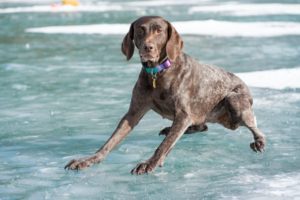
Finding the perfect dog collar for any occasion can be a daunting task, especially when you have so many options to choose from. However, with a few simple tips and tricks, you can easily find the perfect collar that will make your pup look good and feel comfortable all day long.
First of all, consider the size of your pup’s neck before making any purchase. Make sure to measure it carefully and pick a collar that fits snugly but not too tight – after all, comfort should always come first! Secondly, think about what kind of material would work best for your pet’s needs: leather is strong yet soft; nylon is lightweight and durable; while other types may prove better for training purposes.
Don’t forget to take into account the overall design as well as colors when picking out a new dog collar – after all, aesthetics play an important role in how everyone perceives your dog and can bring out his or her personality. If your four-legged friend loves to go swimming or get wet, then you should check out waterproof dog collars to keep your pup looking and feeling good. You never want a wet collar to remain on next to your pet’s neck, so one that dries quickly or does not retain water could fit the bill for the pooch who likes to splash about.
With these tips in mind, you can find the perfect collar for your furry friend no matter what occasion or event they might need it for!
Essential Supplies for Dog Owners
Owning a dog comes with a lot of responsibilities, and having the right supplies is essential for properly caring for your pup. After you find a great dog collar, you should get an ID tag with your contact details in case your doggie gets lost. A good quality food bowl is also necessary for feeding time. Look for stainless steel or ceramic, as these materials last more than plastic and won’t harbor bacteria.
Dog beds are also crucial for providing comfort and warmth to your pet. Choose one that’s easy to clean and has a removable cover so you can wash it regularly. Finally, don’t forget about toys! Not only do they give a source of joy and entertainment for your pup, but they can also aid in keeping their teeth clean and their minds active.
Feeding Your Dog the Right Diet
When it comes to feeding your dog the right diet, there are a few key things to keep in mind:
- You should always consult with your veterinarian before making any changes to your pet’s diet. They can provide you with valuable advice on what type of food is best for your pup’s age, breed and health condition.
- Make sure that the food you choose is high-quality and nutritionally balanced. Look for foods that contain real meat as the first ingredient and avoid those with fillers or by-products.
- Consider adding supplements to your pup’s diet if needed. For example, if they have joint issues or allergies, there are specific supplements available that can help address these issues.
- Be mindful of portion sizes when feeding your pup. Overfeeding can lead to obesity and other health problems so make sure you’re following the recommended serving size for their weight and age group.
How to Spot Signs of Illness in Dogs
When it comes to spotting signs of illness in dogs, it’s important to pay attention to any changes in their behavior. If your dog is usually active and playful but suddenly becomes lethargic and uninterested in activities, this could be a sign that something is wrong. Other signs of illness include changes in appetite, weight loss or gain, excessive thirst or urination, vomiting or diarrhea, coughing or sneezing, bad breath and changes in coat texture or color. Taking a pet first aid class and doing regular head-to-tail check of your pet may help you spot a problem early!
In addition, if your dog seems to be having difficulty breathing or has an unusual discharge from the eyes or nose, these can also be signs of illness. It’s important to take your dog for regular check-ups with the vet so that any potential illnesses can be caught early on and treated accordingly. If you notice any of the above symptoms in your pet, make sure to contact your vet as soon as possible.








